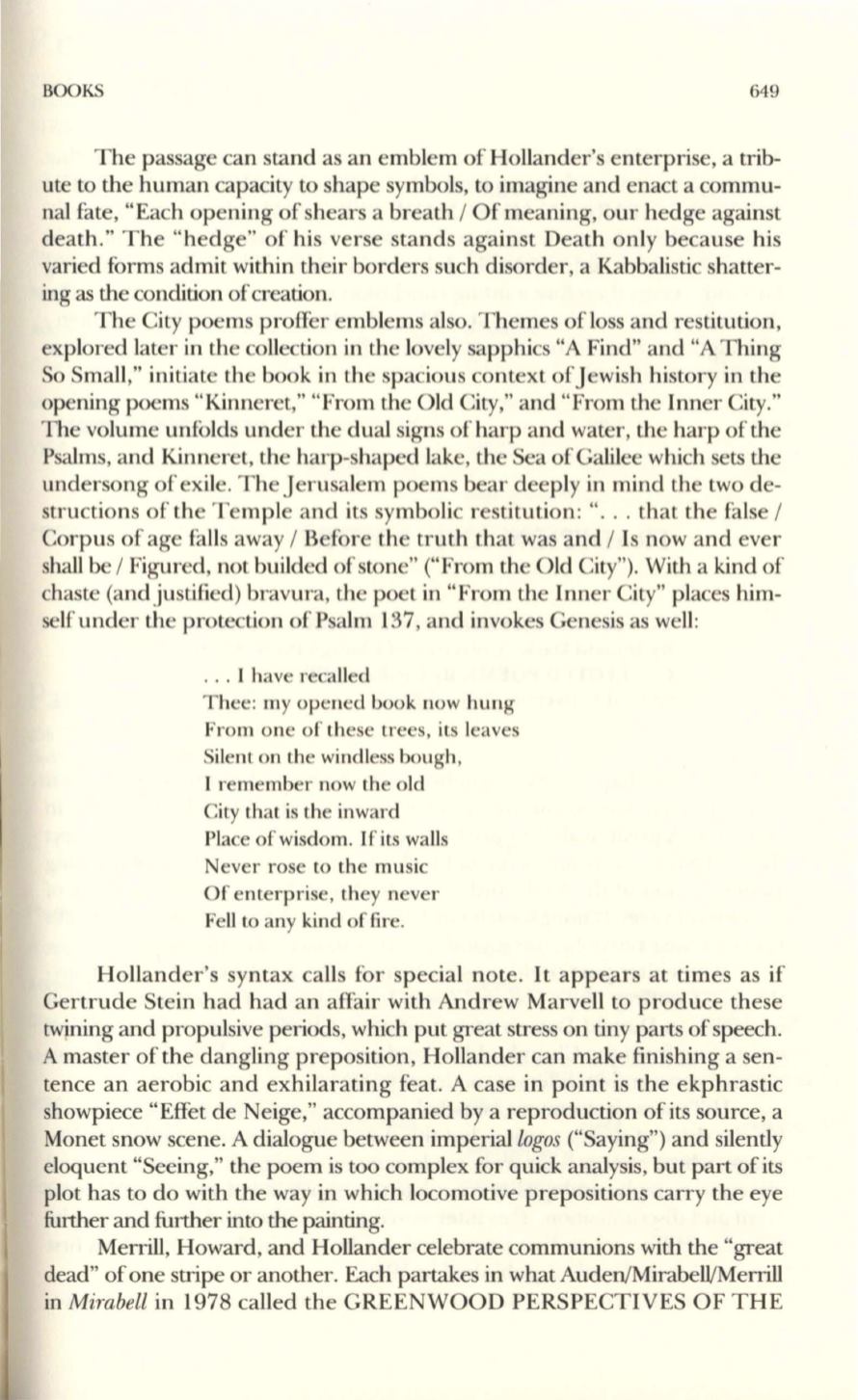
BOOKS
649
The passage can stand as an emblem of Hollander's enterprise, a trib–
ute to the human capacity to shape symbols, to imagine and enact a commu–
nal fate , "Each opening of shears a breath / Of meaning, our hedge against
death. " The "hedge" of his verse stands against Death only because his
varied forms admit within their borders such disorder, a Kabbalistic shatter–
ing as the condition ofcreation.
The City poems proffer emblems also. Themes ofloss and restitution,
explored later in the collection in the lovely sapphics "A Find" and "AThing
So Small," initiate the book in the spacious context ofJewish history in the
opening poems "Kinneret," "From the Old City," and "From the Inner City."
The volume unfolds under the dual signs of harp and water, the harp of the
Psalms, and Kinneret, the harp-shaped lake, the Sea of Galilee which sets the
undersong of exile. The Jerusalem poems bear deeply in mind the two de–
structions of the Temple and its symbolic restitution: "... that the false /
Corpus of age falls away / Before the truth that was and / Is now and ever
shall be / Figured, not builded of stone" ("From the Old City"). With a kind of
chaste (and justified) bravura, the poet in "From the Inner City" places him–
self under the protection of Psalm 137, and invokes Genesis as well:
. .. 1 have recalled
Thee: my opened book now hung
From one of these trees, its leaves
Silent on the windless bough,
I remember now the old
City that is the inward
Place of wisdom. Ifits walls
ever rose to the music
Of enterprise, they never
Fell to any kind of fire.
Hollander's syntax calls for special note. It appears at times as if
Gertrude Stein had had an affair with Andrew Marvell to produce these
twining and propulsive periods, which put great stress on tiny parts ofspeech.
Amaster of the dangling preposition, Hollander can make finishing a sen–
tence an aerobic and exhilarating feat. A case in point is the ekphrastic
showpiece "Effet de Neige," accompanied by a reproduction of its source, a
Monet snow scene. A dialogue between imperial
logos
("Saying") and silently
eloquent "Seeing," the poem is too complex for quick analysis, but part of its
plot has to do with the way in which locomotive prepositions carry the eye
further and further into the painting.
Merrill, Howard, and Hollander celebrate communions with the "great
dead" of one stripe or another. Each partakes in what AudenlMirabe11!Merrill
in
Mirabell
in 1978 called the GREENWOOD PERSPECTIVES OF THE


